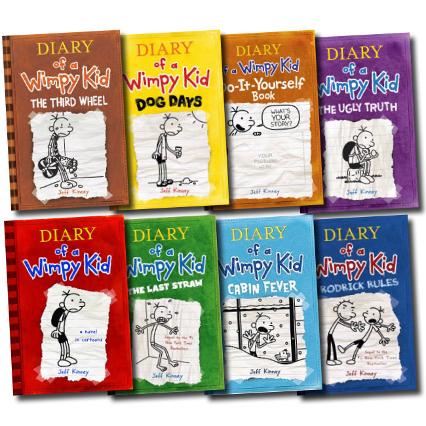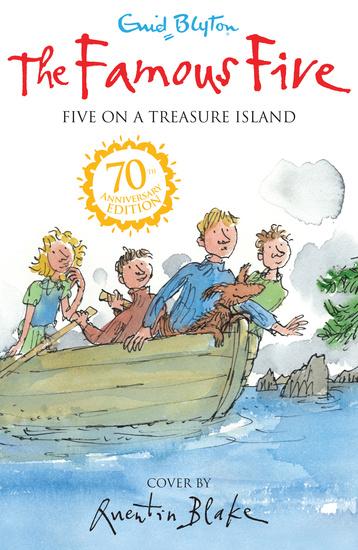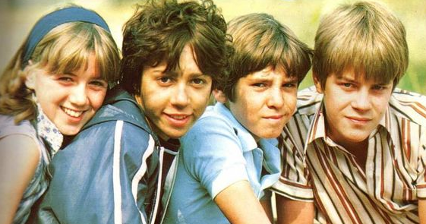WEEK 1
The Twits
By Roald Dahl
My first introduction to Roald Dahl was through the artwork of Quentin Blake. Blake was the illustrator of the UK editions of the Agaton Sax series of books by Swedish author Nils-Olof Franzén, comedic detective novels for children which I got out, one a week, from Rathmines Library, and sat up reading way past my bedtime each night. Blake's black and white illustrations for the range were cartoony (important for me as my previous reading material before discovering Agaton Sax was the Beano), vibrant, and deceptively simple, and I used to love trying to copy his style. Only years later did I find out that Quentin Blake used to plan each illustration meticulously, drawing each one again and again until it looked effortless. No wonder I couldn't copy him!
When I had exhausted all the Agaton Sax books, I looked around for something similar, and my eyes fell on The Twits. Another book with Quentin Blake artwork! Hold on, there's loads of them! I brought home The Twits and was immediately hooked – I had to read every Roald Dahl book.
The Twits, though, still remains my favourite (Matilda is a close second). The Twits tells the story of Mr Twit a horrible, dirty man with a huge, straggly beard who drinks beer for breakfast, and Mrs Twit, his ugly, hideous wife who's face has been contorted over time by evil thoughts, and who has a glass eye. The Twits hate each other (and everybody else in the world) and, when not being cruel to the Muggle-Wumps (the monkeys they keep in the garden) play nasty, vicious practical jokes on each other. Blake excels here, with fantastic illustrations of Mr. Twit's food-filled beard, and the put-upon but clever monkeys. His illustrations bring the text to life.
With the help of the Roly-Poly Bird, a flock of captured birds destined for a bird pie, and a large amount of Hug-Tight Glue, the Muggle-Wumps get their revenge on the Twits by playing the ultimate practical joke on them, leading the terrible pair to a (literally) sticky end.
What I loved about this book was the sense of anarchy, that anything could happen. Remember this was written in 1980, and I'm sure, though he was in his sixties at the time, Dahl couldn't have been unaware of the mayhem of the punk movement which had taken over popular culture for the preceding few years. Dahl's imagination sparkles with playful fiendishness: when Mrs Twit serves her husband a spaghetti dinner made with worms and a glass of beer with her fake eye at the bottom, her husband repays the favour by secretly enlarging her walking cane every day with a piece of wood no bigger than the width of a penny, leading her to believe that she has caught 'the shrinks'.
But as with all Dahl stories, the bad characters always get their comeuppance and the good characters are always rewarded – the anarchy and nastiness is always underpinned by strong messages of friendship and morality. All of which make Dahl's books, and The Twits in particular, perfect reading for any nine-year-old and most adults!
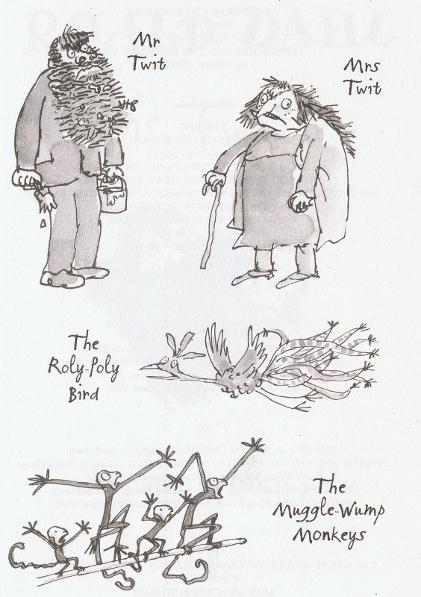


WEEK 2
Mr Stink
By David Walliams
Following on from last week's blog on The Twits by Roald Dahl, I have selected for this week a book by an author who many consider to be Dahl's natural heir to the throne, the "Little Britain" comedian and, latterly, children's author David Walliams.
As with Roald Dahl, the first thing that drew me to David Walliam's books were the Quentin Blake illustrations. At least I *thought* they were Quentin Blake illustrations. Blake has only illustrated two of Walliams' books. The Boy In The Dress and Mr Stink, with all the rest illustrated by Tony Ross. (Ross is the artist for Francesca Simon's Horrible Henry series.) Blake's and Ross's illustration style is superficially similar, so it was a reasonably easy mistake to make, especially in the Dublin Airport branch of WH Smith's, five minutes after they have announced final boarding for my flight to Malaga. I grabbed two of the books and, after having paid for them, ran.
And I was so glad I did. One was Demon Dentist, with the aforementioned Tony Ross illustration, and the other was Mr Stink.
Mr Stink tells the story of Chloe, an imaginative 12 year old who is ignored by her mother who favours Chloe's over-achieving little sister. Chloe is a lonely girl who is bullied at school, but has a love of reading and creating stories, and, of course, a great love for her put upon father. Both she and her dad live in fear of Chloe's snobby mother.
Chloe's life changes when she meets Mr Stink, a filthy, smelly gentleman of the road, and his equally grimy dog, The Duchess, a white Yorkshire Terrier who everyone thinks is black as she is normally covered in layers or dirt and muck.
Despite of Mr Stink's odour, by which he can be smelled coming from a mile away, and which bestows him with the power to empty cafés simply by walking into them (he takes advantage of the empty cafés to help himself to any spare sausages that may be going), Chloe befriends the tramp and invites him to stay in her family's shed (an act of 'unimaginable kindness', according to Mr Stink). She does this partly because she feels sorry for him, partly because she is lonely and partly to get back at her overbearing mother.
Over the course of the book as Chloe tells stories to Mr Stink, the tramp's own story is revealed – he was once a very rich man, (his real name is Lord Darlington),but he became homeless when his mansion burnt down and his wife died.
This is a book that deals with suppressed and hidden ambitions – Chloe's would-be politician mother tries to thwart the girl's desire to be a writer as she had done with her husband's dreams of being a rock star before they married. Poor Chloe's sister dreams of ditching her over-achieving persona with its attendant soul-crushing timetable of activities and classes, and wishes to be an ordinary girl. And Mr Stink hides the story of his affluent past, mostly from himself.
This is a very affecting story, beautifully told, with characters who, although at first glance a bit off-the-wall, are well drawn and believable.
Quentin Blake's illustrations bring the story to life – nobody draws dirt like he can – and add immeasurably to the reading experience.
My six year old, and my 12 year old both loved this one, as did I.




WEEK 3
Red Rackham's Treasure
By Hergé
Despite Red Rackham's Treasure being the second part of a two part story that began with The Secret of the Unicorn, it was the first Tintin book I ever read.
What attracted me to the book when I saw it in the children's section of Dundrum Library all those years ago was the cover – its underwater setting, floating jellyfish and fantastical shark-like submarine appealed to my childish sense of adventure (long since gone), I was hooked instantly!
Being the second part of a longer story, the book throws you head-first into the centre of the action, with Tintin, his dog Snowy and his friend Captain Haddock as they prepare to depart on a fishing trawler called the Sirius, to search for lost treasure. They are joined by the bowler-hatted, identical idiot detectives Thomson and Thompson (no relation) and by the eccenric Professor Cuthbert Calculus, who stows away on the boat.
Calculus is the inventor of the shark submarine, and when he is discovered, Captain Haddock grudgingly allows him to put together the sub (which he has smuggled on board in parts).
Using a map they discovered in the previous book (which at the time, I hadn't yet read), they come across an unmarked island, inhabited by the descendants of the original parrots that Haddock’s famed ancestor Sir Francis Haddock had taught curse words to when he was marooned there – much to the modern-day Haddock’s chagrin, the parrots still knew the swear words!
Despite several adventures involving searching the island, dodging the evil Bird Brothers, and diving on the wreck of Sir Francis’ ship, the Unicorn, the treasure refuses to be found and the crew go home disappointed to Captain Haddock’s newly acquired Marlinspike Hall, bought for him by new friend Cuthbert Calculus, using the proceeds of Calculus’ shark-sub invention. Once at the hall Tintin discovers that the treasure may be closer to hand than they first imagined!
Since its publication as a collected volume in 1944, this book has been Hergé’s (Georges Remi) best selling Tintin album, proving so popular and so archetypically 'Tintin" that Stephen Spielberg used it and The Secret of the Unicorn as the basis for his hit 2011 film. The book was produced by Hergé while Belgium was under Nazi occupation, and is one of Hergé’s least political works for that reason, erring on the side of mystery, action and adventure rather than social commentary. In the preceding book the character of Tintin even underwent a career change from investigative reporter to explorer as the former profession was frowned upon by the Third Reich.
But all this went over my head as a child when I read it first – I was drawn in by the mystery, action and adventure, as well as the beautiful drawing style and vibrant colours. Hergé employed a ‘ligne claire’ or ‘clear line’ style that suited the process of colouring, and colours are used to great effect here, especially in the underwater scenes.
Red Rackham’s Treasure is a book that has stayed with me over the years. After that first reading, I was back at the library straight away to get out The Secret of the Unicorn. And after that, I was back to get out every other Tintin book. I started copying out the panels for drawing practice, and had a huge self-drawn reproduction of one of the shark-sub panels on the wall over my bunk bed until I was a teenager.
I love this book because it led me into the rich world of Tintin, a world so full of imagery, colour and adventure – qualities that make Tintin books perfect for reluctant readers.
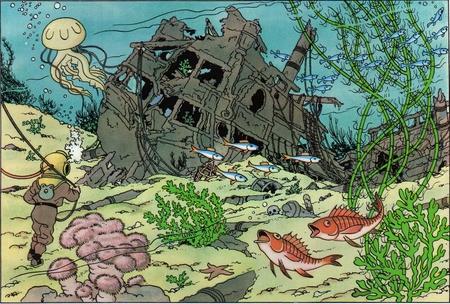
WEEK 4
There is a Bird on Your Head
By Mo Willems
There is a Bird on Your Head is third in an ongoing series of “Elephant and Piggie” picture books for younger children, written and illustrated by Mo Willems.
Mo Willems is an American author and illustrator, and is also the ultra-prolific creator of the ‘Knuffle Bunny’ series and the very popular “Pigeon” series of picture books, as well as many, many others.
Willems began his career as a writer and animator for Sesame Street, the children’s educational programme that gave us Kermit the Frog, Ernie and Bert, and a host of other muppets, and where Willems won 6 Emmy Awards for his writing. From there he went on to write for Nickelodeon and Cartoon Network, creating the “Sheep in the Big City” cartoon and becoming head writer on the very popular “Codename: Kids Next Door”.
He started writing and illustrating children’s books in 2003, with his first book, “Don’t Let Pigeon Drive the Bus”, winning the 2004 Caldecott Honor. Not a bad start! Two of his subsequent books (in the “Knuffle Bunny” series) also won the Honor.
Out of all of his books, There is a Bird on Your Head is my favourite. I have a six year old son that I used to read this one to when he was younger (as well as many other Willems books), and it always had him in fits of giggles. Which is probably not a good thing when you are trying to get him to sleep!
The story is told with large, full page illustrations of the titular Elephant (real name Gerald) and Piggie (real name, um, Piggie) as they communicate with each other with snappy dialogue in cool word balloons. Willems’ training at Sesame Street really shines through here – the two characters come to life with pencil illustrations that convey energetic physicality and tons of emotion.
The snappy dialogue works for children as it is not only snappy, it’s also quite easy to read. My six year old surprised himself recently (not me, I knew he could do it – attaboy) by being able to read practically every word in the book for himself after having endured two years of his dad’s dulcet bedtime tones as I read the book out loud to him with funny voices. (Piggie sounds like Harvey Fierstein. Who knew?)
There is a Bird on Your Head is a great introduction to the ever-expanding world of Mo Willems – he seems to release a book every time he coughs – but when his books are this witty, beloved by kids 4-8, and so downright entertaining for adults to read to their kids, I’m hoping nobody hands Mo a bottle of cough syrup anytime soon.
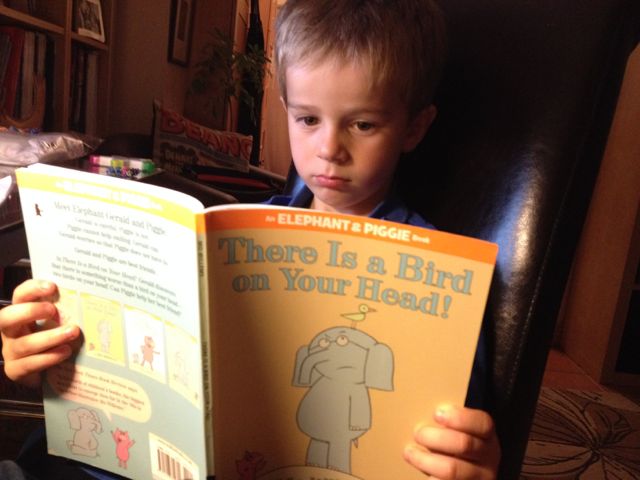

Week 5
ARTEMIS FOWL
by EOIN COLFER
I have to admit that I didn’t technically read the first Artemis Fowl book – rather myself, my wife and the kids listened to it on audiobook during a week-long holiday to West Cork. As we drifted through the beautiful Cork countryside and towns like Unionhall, Glandore, Skibbereen and Clonakilty, our ears were massaged by the dulcet tones of English actor Nathaniel Parker (the titular Lynley in the BBC’s Inspector Lynley Mysteries) as he read Eoin Colfer’s breakthrough children’s novel.
And what better place to listen to an Artemis Fowl book – West Cork landscape is filled with beauty, magic and, in some places, the promise of danger – a perfect visual backdrop for the book itself.
Artemis Fowl is the first in an eight novel series, the book is aimed at children from 9-14 years. It concerns the adventures of Artemis Fowl, a teenage criminal mastermind, living in Ireland, who captures a Fairy (yup, they exist) and holds her to ransom, the idea being to get riches from the Fairy people and restore his family’s dwindling fortunes. Along with his faithful (and hulking) manservant Butler, the cool and calculating Artemis explores the Fairy world – a world which co-exists with the human world, unnoticed by idiotic and lumbering humans – but finds himself becoming more and more drawn in with Fairy life, even becoming grudging friends with Holly Short, the feisty elf and member of LEPrecon (the recon division of the Lower Elements Police) that he kidnaps. Despite being an evil-ish criminal genius, he still ends up kidnapping a cop. Go figure.
Over the course of the book, Artemis, while he doesn’t learn the error of his ways – that would ruin his anti-hero status – he learns to respect the Fairy world and its many inhabitants.
Eoin Colfer is our current Laureate na nÓg, the Children’s Laureate, and his first Artemis Fowl book is a stormer, leading me and the boys to read all the subsequent Fowl novels. It’s exciting, fast moving and pacy, with enough Irish interest to keep parents, as well as kids, thoroughly hooked. Throughout the series, Artemis grows up as he moves through his teenage years, growing as a person as well as physically – and eventually becomes a well rounded individual and abandons his life of crime. Which isn’t great for the series, as Colfer has said that now Artemis is ‘good’ he has lost interest in writing about him!
Ah, well. It was great while it lasted.
While the Artemis Fowl books are low on illustrations, there are graphic novel versions of the first four books available, adapted by Andrew Donkin. These are of variable quality, but the original novels are well worth a read!
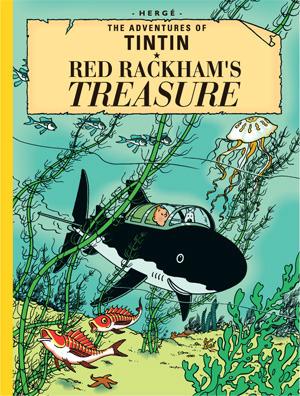






WEEK 6
Diary of a Wimpy Kid
By Jeff Kinney
Diary of a Wimpy Kid began as an imaginary online diary in 2005 on FunBrain.com, with daily entries written and drawn by Jeff Kxinney.
After receiving 20 million online views between 2005 and 2007, the not unwise decision was made to collect the entries and release them as a book. Initially Kinney had the idea to market the book to adults as a sort of print version of the TV programme The Wonder Years, but he was persuaded that it would have much more traction with a younger audience. And boy, did it. Diary of a Wimpy Kid went on to sell millions of copies, spawn seven (to date) sequels, and take its rightful place in the hearts and minds of children all over the globe.
The book is written from the point of view of Greg Heffley, a normal, underachieving (middle) American kid with a creative bent. Greg’s main goals in life, as with many pre-teens, are to fit in and be popular. His troubles are minor in the great scheme of things, but, no stranger to constructing a mountain out of a gopher hill, he elevates them to such a height that he always makes a hash of them.
He feels superior to his naïve but lovable best friend Rowley, who remains loyal to Greg, despite their numerous fallings-out. Greg is a middle child and, like all middle children, has a chip on his shoulder, being no longer cute enough to compete with his baby brother Manny and living in fear of his work-shy older brother Roderick.
Add to this all the daily aggravations of going to school, homework, school sports events, boy scouts and putting up with the racket produced by his brother’s abysmal teenage rock band, Löded Diper, you can tell that Greg’s diary is going to be jam packed with minor disappointments, light pain and pre-teen angst.
Kinney really has the trick of getting into the mind of an imaginative tweenager. The diary entries are presented as if handwritten by Greg himself, with plenty of simple line drawings drawn ‘in character’. These illustrations are charming and funny, reminding the reader that Kinney started life as a cartoonist – they also are simple enough for children to emulate, which adds to their appeal.
Kinney has said that when he is writing a book, he sits in a comfy chair for weeks on end thinking of funny situations. He writes these down in a notebook (have a look at the pic, the notebook is absolutely jammed with ideas!) and as the deadline looms, he assembles the ideas, jigsaw-like, into a book. An unusual way to work for sure, but it seems to work for him!

My two boys were lucky enough to meet Jeff Kinney when he visited Dublin a couple of years ago, as well as the two stars of the Wimpy Kid movie. The first time I'd ver seen them impressed!

WEEK 7
JUST WILLIAM (series)
BY RICHMAL CROMPTON
I was a huge fan of comics when I was a kid, and lived on a diet of colourful British weekly publications like The Beano, The Dandy, Whizzer & Chips, Cracker, Oink, Nutty, Whoopee, The Beezer, The Topper; all of which were published by London-based IPC Publications and Dundee-based DC Thompson. All of these comics were full of anarchic, anti-establishment fun, and were populated by a chort of naughty schoolboys (Dennis the Menace, Roger the Dodger, Billy Whizz), bold schoolgirls (Minnie the Minx, Keyhole Kate, Beryl the Peril – rhyming and alliteration was obviously very popular in the early 80s!) and, of course, sentient, talking animals such as Mickey the Monkey, Foxey and Julius Cheeser. But it was the naughty schoolboy stories that really struck a chord with me, especially Ginger from The Beezer, a prankster with a big red afro hairstyle.
So when my Dad, on one of our trips to the Library, introduced me to the Just Williams books, he was preaching to the converted. Most of the comic characters that I loved were around in their respective publications for decades before I was born and the same was tru for William Brown, the protagonist of the Just Willam series – my father used to read the books when he was a kid.
The Just William books were written by Richmal Crompton (who, as a nine year old, I couldn’t believe was a female author, her understanding of boy characters being so true-to-life!) between 1922 and 1970, and concern themselves with the exploits of the titular William, an eleven-year-old schoolboy who lives in a middle-class area somewhere north of London (Crompton is never too specific where, but at one point mentions a roadsign that indicates the A1, so it’s probably somewhere around Bromley in Kent.) The books are all, barring one, collections of short stories, which give a young reader a selection of nice, easy reads.
William is the leader of The Outlaws, his own gang of pals, who, along with William’s dog Jumble, get into numerous scrapes and adventures. The gang consists of Ginger, William’s best friend (no relation to The Beezer version!), Henry and Douglas, and the stories themselves often reflect current events of the 20th century. And given that the books span 22 volumes and 50 years, there were quite a lot of events for Cromton to write about! For instance, Willam the Dictator (1938) dealt with fascism, William and the Evacuees (1940) was about inner-city children moving to the ‘countryside’ of Bromley during the London Blitz, and William and the Moon Rocket (1954) and William and the Space Animal (1956) were written during the Space-Race. William even tries to rival The Beatles in William and the Pop Singers, published in 1965!
Throughout all of his adventures, which, like my Dad before me, I read ravenously as a boy, William remains an eleven-year-old schoolboy – no mean feat when you consider how long the books ran for. He is the eternal naughty, anarchic schoolkid, battling his older brother Robert, his arch rival Hubert Lane, and his long time admirer and would-be Outlaw, Violet-Elizabeth Botts, the daughter of nouveau-riche parents and owner of the most pronounced lisp and loudest, most blood-curdling scream in the district – typical quote: “You must let me play, William, or I'll thcream and thcream and thcream 'till I'm thick!" – William is an iconic character, immortalized in two TV series over the years, and is a touchstone and inspiration for quirky, free-thinking kids everywhere.
A fantastic series to introduce kids to, full of amusing stories where kids have fun without keyboards, plasma screens or smart phones, relying instead on their inherent sense of adventure (we all have one!) and imagination. And to this day, I’m sure my Dad named my younger brother William after William Brown…

WEEK 8
FIVE ON A TREASURE ISLAND
BY ENID BLYTON
We’re keeping it old-school this week with Five on a Treasure Island by Enid Blyton!
Five on a Treasure Island is the first in Blyton’s series of Famous Five books and is an ‘origins’ story, telling of how the five met, and got together to solve crimes. Actually, three of the Five – Julian, Dick and Anne – were siblings, so presumably had met previously to this tale! The fourth member of the Five was their cousin Georgina, a headstrong, courageous girl who dresses like a boy and insists on being called George, and the fifth member is Timmy, George’s faithful, clever dog.
At the start of the book school-boarders Julian, Dick and Anne are invited to spend the summer with their down-at-heel Aunt Fanny and Uncle Quentin in Kirrin Cottage in the picturesque South England coastal village of Kirrin. There they meet the aforementioned George, who in turn introduces the siblings to her dog Timmy, who, banished from the house, secretly lives with the son of a fisherman in the village.
Surly and disagreeable at first, George agrees to take the siblings on a trip to nearby Kirrin Island, where they are busy exploring a ruined castle when a huge storm blows up, forcing them to take shelter. The storm is so big it beaches a previously sunken shipwreck, grounding it on rocks surrounding the island, and, after George tells them excitedly that the ship was her great-great-great grandfather’s ship and was reputed to be transporting gold when it sank, the kids decide to investigate. Inside they find a box which contains a map of Kirrin Castle on the island – a treasure map! When there is talk of the whole island being sold, Aunt Fanny and Uncle Quentin agree to let the kids go camping on the island ‘one last time’. In reality they are searching for treasure, but their plans are scuppered when the Island’s woulkd be purchaser send in heavies to get the treasure for himself. A cat-and-mouse chase ensues between the kids and the bungling thieves, ending in the Five escaping the island and leaving the robbers stranded. The gold is declared the property of George’s family, making them rich, but George’s only request is to keep Timmy the dog. She agrees to go to boarding school with Anne, and she and her cousins become the best of friends and go on to solve many more mysteries and have oodles of adventures over 20 more books.
Of all the Famous Five books, this one was my favourite. I had watched as a child the repeats of the 70s TV series based on the books and was quite taken (in more ways than one..!) with the character of George, whom I preferred over her more saccharine, slightly priggish cousins. The books were written by Enid Blyton between 1942 and 1963 and reflect the austere spirit of the times as well as Blyton’s upper middle class background, with a tendency to patronize poorer people and treat foreigners as untrustworthy. But all this went way over my head as a kid, I just loved the adventure and the idea of a group of children outwitting gormless adults, and I used to read two or three at a time, sometimes getting missed up as to whether the Five were kidnapped by gypsies, imprisoned in a castle dungeon, or trapped inside a ‘priest hole’ in a crumbling stately home. Happy days…
WEEK 9
DOCTOR WHO AND THE GENESIS OF THE DALEKS
BY TERRANCE DICKS
A bit of a left field (and properly geeky) one this week – it’s an adaptation of a TV series that just about falls within the realms of children’s literature – but it was a book that was incredibly important to me as a child because it was the one that shifted my affections from the TV screen to the printed page.
As a child, I was brought up on comics – The Beano, The Dandy, Whizzer & Chips, Warlord, 2000AD – I devoured all the British comics, be they funny papers, war stories or space battles – and the thought of reading an actual book, a real book full of words with NO pictures at all, was horrifying to me! Books without pictures were daunting, forbidding tomes of fear. And the text looked like hundreds of lines of ants marching across the page. Poisonous ants with big pincers that might bite my fingers if I tried to read.
Doctor Who and the Genesis of the Daleks was the first ‘no pictures’ book I read from cover to cover, and what prompted me to read it wasn’t the coaxing of my mum and dad, or the nagging of my teacher. I read it because I’d seen the story on the TV and just had to have more. In fact, I think it was around episode 2 of the TV show (Doctor Who lasted a lot longer in those days, they would make 6 or 8 weekly episodes out of each story) that I hightailed it to the nearest library to see if I could get the novelisation. And when I checked it out, I found that all those little lines of ants weren’t that daunting if you were really interested in the story.
The book was written by Terrance Dicks, a script editor for the Doctor Who TV programme, who also provided the TV script for the tale. It’s story of how the evil robot Daleks were created by mad mastermind Davros only to be thwarted by the Doctor, who has to make a choice either to exterminate the exterminators at birth, or let them live in the hope that they will turn out less evil than they had before, was full of allegories to Nazi Germany and the rise of the Third Reich. On screen this was portrayed by (in hindsight) slightly unconvincing British thespians with mild European accents goose-stepping around and giving each other stiff-armed salutes, but in the book, these characters came to life – their motivations becoming clearer, their misguided-ness (or plain evil-ness) painted large on the pages.
As much as I loved watching the TV show, the books provided a more instant fix. Today one would probably binge on Breaking Bad on Netflix, but in those pre-broadband days I binged on the Doctor Who books, reading 4 or 5 a week until I had exhausted the lot. And then I moved onto bingeing on the novelisations of other TV show I liked, and from there onto all sorts of other books, some of which were destined never to make the screen – ie. just books.
But Doctor Who and the Genesis of the Daleks was my start, and I’ll always look fondly on it for that. And for showing me that, for kids, it shouldn’t be a choice between books and TV – a mix of both is preferable. Obviously a 80-20% mix, favouring books!
Mind you, I tried to re-read Doctor Who and the Genesis of the Daleks recently and found myself giving up after 6 or 7 pages! (It seems I don’t like Doctor Who as much now as I did 30 years ago…)
WEEK 10
RATBURGER
BY DAVID WALLIAMS
Yes, I know Ratburger is the second David Walliams book I have blogged about, but I am very fond of his stuff (at least, his children’s books stuff), and I haven’t been able to finish his latest book, Awful Auntie, in time for this week’s blog.
Ratburger tells the story of Zoe, a lonely girls who lives with her Father and slothful stepmother Sheila in a council flat. Things aren’t going great for poor Zoe at the start of the book; her mother died when she was small, she’s being bullied at school and her hamster, Gingernut, has gone to the great hamster wheel in the sky, so when she finds a rat in her bedroom she naturally adopts it, naming him Armitage.
She brings Armitage to school (well, you can’t leave a rat at home all day, he’d get bored) but is suspended when he walks across Zoe’s head in history class.
A common element to all of William’s books is the character of Raj, the local sweetshop owner, who is always on hand to dole out smart advice (as well as Smarties) to the main characters in the books. Raj is a fine comic character who helps anchor the books in real time in the same locale, which has been described (by me) as a literary Walliams-Verse. When Zoe visits Raj he advises her to set the rat free. She does, but Armitage comes back, convincing Zoe that they are meant to be together.
But they aren’t together for long: Zoe’s lazy stepmother discovers the rat and forces Zoe to hand him over to local pest control operative Burt, who, despite being blind, is also (conveniently) the owner of a burger van. Zero points for guessing what evil Burt makes his burgers from!
Zoe teams up with her Dad to get Armitage back and a pitch battle ensues, during which Sheila and Burt take a tumble into the burger making machine and are eaten by Burt’s recently-freed rodent livestock. Zoe, her Dad and Armitage end the book by repainting Burt’s burger van as ‘Armitage’s Ices’ and selling ice cream to the council estate kids.
This is another adventure by Walliams that moves along at break-neck speed, full of stomach-churning scenes, hair-raising tales of friendship against all the odds, child empowerment and grisly endings.
Tony Ross is the illustrator here, and his scratchy black and white line and wash drawings are used to great effect, each one telling a story itself.
A great read for 9-11 year olds.
WEEK 11
HARRY POTTER AND THE PHILOSOPHER’S STONE
BY J.K. ROWLING
Harry Potter and the Philosopher's Stone is the first novel in the hugely popular Harry Potter series, written by J. K. Rowling, and I have to admit I’ve never read it.
I have, however, listened to the audio book on many occasions (and I’ve read all of the others in the range.) The audiobook is read brilliantly by Stephen Fry, and you can’t help feeling that, unlike the movies, he is pronouncing the Latin spells correctly.
The Philosopher's Stone is our introduction to the universe of Harry Potter and sets out the now familiar premise – a neglected, orphaned boy grudgingly allowed to live under the stairs in his aunt’s house, a ‘shameful’ family secret that begins to bloom in Harry as he gets older, the whisking away to a magical, fantasy world. The book taps into the secret desires of every bored ten year old who plays football, watches TV, loads the dish washer, eats fish fingers… and knows deep down that they are really meant for better, less mundane, less muggle-ish, more magical things; that a life of fantastical adventures and astonishing excitement will be theirs! As soon as Hagrid arrives on a flying motorbike, that is.
The book was published in 1997 and the vast majority of 20-somethings have grown up with Harry, Hermione, Ron and the gang, and the gang have grown up with them – each novel covers another year in the magical school of Hogwarts, and the reader develops with the characters as they grow older, learn to be young adults (boo), fall in love (yay!), and eventually come to realize that their destiny is to either defeat the most evil in the world or die tryin’.
Or should that be, AND die tryin’?
But all that is miles off yet. The first book is mostly fun and jolly japes of the ‘Olde Englysh’ boarding school variety, with broomsticks replacing hockey sticks and salivating, many-fanged three headed dogs replacing the snooty head girl – it’s a brilliant twist on humdrum reality and it’s so easy to get lost in the fantasy world Rowling creates, a world that, in the books, lives clandestinely alongside our own. How many kids have rolled up at King’s Cross Station looking for Platform 9 3/4s and the Hogwarts Express?
Harry, the slightly morose innocent, enters this world with us in tow and shares our awe at the wonders within, gaining lifelong friends and enemies, and becoming what he was born to be – a wizard. And more importantly, meets and defeats (for now) the evil wizard known as ‘He Who Shall Not Be Named’ (AKA, Voldemort. Oops.), setting up nicely the next six books in the series.
The books were written by J.K. Rowling, who was living in relative poverty when she published the first in the series. The books have gone on to become the best selling series in history, sold all over the world, rebranded as books for adults with more sedate cover designs (and renamed in the US as Harry Potter and the Sorcerer's Stone, go figure)and Rowling is now estimated to be worth £560 million, which goes to show that a little bit of magic goes a long, long way.
WEEK 12
TROLL AND THE OLIVER
BY ADAM STOWER
Troll and the Oliver tells the familiar story of a Troll in pursuit of a boy, but, uniquely, it tells it from the Troll’s point of view.
Every day, around lunchtime, the huge, hungry, blue Troll tries to catch the happy-go-lucky little boy, Oliver. But every time Troll thinks he has him, the fleet-footed Oliver skips beyond his grasp, playing tricks on and giggling at the poor, put-upon creature, and forcing him to exist on a diet of twigs and stones rather than tasty little children.
Eventually the Troll gets fed up and gives up his pursuit. Try as he might, Oliver can’t find him anywhere, and heads home to bake a cake in celebration. Suddenly the Troll leaps from his hiding place in a kitchen cupboard and gobbles Oliver up! Luckily for Olivers everywhere, the Troll finds the taste of Oliver to be revolting and spits him out. All that is left for them to do is to eat the cake that Oliver was baking, and form a Troll-Human baking partnership the likes of which would have Mary Berry quivering in her high heels and give Paul Hollywood a soggy bottom.
This book was written and drawn by Adam Stower, a British artist, best known for his illustrations of other authors’ books. He has written and illustrated several himself, such as Slam! and Silly Doggy, but this is the breakout book produced under his own steam.
The story is funny and engaging, and the twist of having the Troll as a sympathetic character is very clever. The illustrations (pen & ink with watercolour washes) are light and bright – Oliver fairly floats above the ground as he skips away from the horrendous yet clumsy Troll – and suit the text admirably, and there is a juicy shock for younger readers when the Troll jumps out of the kitchen cupboard!
I picked up this book on spec in a local bookstore purely on the strength of the drawing style, which reminded me of Bill Watterson’s Calvin and Hobbes, and I wasn’t disappointed. Neither was my six year old, who laughed like a drain at the Troll’s pathetic-ness and squeaked loudly when Oliver got eaten!



